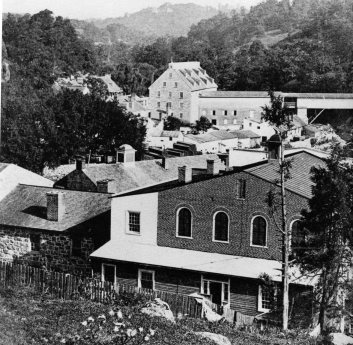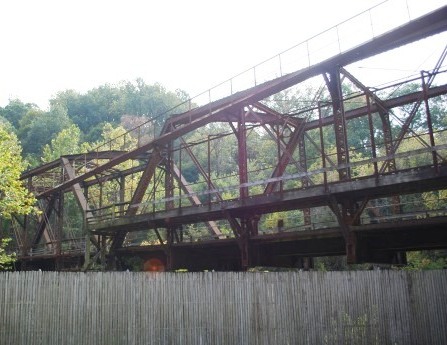 |
 |
| Patapsco Mills Bridge as shown in Henry K. Sharp's book, The Patapsco River Vally. The caption to the picture: "Mill house on bridge, c1860." This photograph taken from the lawn of the Angelo cottage captures the mill town in the pre-Civil War years. The stone building with the arched windows is the opera house. Above it, in the middle distance, is the Ellicott Brothers' Patapsco Mill built in 1809. This angle allows a perfect view of the bridge they constructed from the mill building across the Patapsco to the B&O Railroad in 1829 or 1830. (Maryland Historical Society.) | Iron railroad bridge crossing the Patapsco River from Wilkins-Rogers flour mill in 2008. |